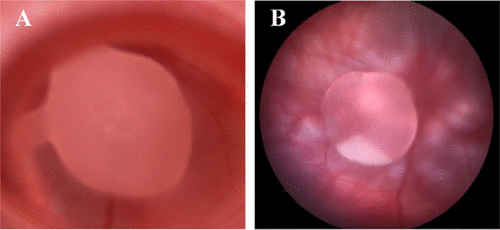当前位置:
X-MOL 学术
›
Mol. Pharmaceutics
›
论文详情
Our official English website, www.x-mol.net, welcomes your
feedback! (Note: you will need to create a separate account there.)
Ocular Biodistribution of Spironolactone after a Single Intravitreal Injection of a Biodegradable Sustained-Release Polymer in Rats.
Molecular Pharmaceutics ( IF 4.5 ) Pub Date : 2019-12-05 , DOI: 10.1021/acs.molpharmaceut.9b00707 Naoual Dahmana 1 , Laura Kowalczuk 2, 3 , Doris Gabriel 4 , Francine Behar-Cohen 2, 5, 6 , Robert Gurny 1, 4 , Yogeshvar N Kalia 1
Molecular Pharmaceutics ( IF 4.5 ) Pub Date : 2019-12-05 , DOI: 10.1021/acs.molpharmaceut.9b00707 Naoual Dahmana 1 , Laura Kowalczuk 2, 3 , Doris Gabriel 4 , Francine Behar-Cohen 2, 5, 6 , Robert Gurny 1, 4 , Yogeshvar N Kalia 1
Affiliation

|
Sustained-release formulations for ocular delivery are of increasing interest given their potential to significantly improve treatment efficacy and patient adherence. The objectives of this study were (i) to develop a sustained-release formulation of spironolactone (SPL) using a biodegradable and injectable polymer, hexyl-substituted poly-lactic acid (hexPLA) and (ii) to investigate the ocular biodistribution and tolerability of SPL and its metabolites in rats in vivo over 1 month following a single intravitreal injection (IVT inj). The concentrations of SPL and its two principal active metabolites, 7α-thiomethylspironolactone and canrenone (CAN), in the different ocular compartments were determined at different time points (3, 7, and 31 days after IVT inj) using a validated ultra-high-performance liquid chromatography-mass spectrometry method. Systemic exposure following a single IVT inj of 5% SPL-hexPLA formulation was evaluated by quantifying SPL and its metabolites in the plasma. Ocular tolerability of the formulation was evaluated using in vivo retinal imaging and histology. In vitro release studies revealed a sustained release of SPL from 5% SPL-hexPLA for up to 65 days. In vivo studies showed that SPL and its metabolites were detected in all ocular tissues at 3 and 7 days post-IVT inj. At 31 days post-IVT inj, SPL and CAN were mainly detected in the retina. These results also highlighted the clearance pathway of SPL and its metabolite involving the anterior and posterior routes in the first week (days 3 and 7), then mainly the posterior segment in the last week (day 31). This study showed that a single IVT inj of 5% SPL-hexPLA in rats enabled sustained delivery of therapeutic amounts of SPL for up to 1 month to the retina without systemic exposure. This formulation may be of interest for the local treatment of diseases involving overactivation of the mineralocorticoid receptor in the chorioretina such as chronic central serous chorioretinopathy.
中文翻译:

玻璃体腔注射大鼠体内可生物降解的缓释聚合物后螺内酯的眼内生物分布。
眼部给药的缓释制剂具有极大的潜力,因为它们具有显着改善治疗功效和患者依从性的潜力。这项研究的目的是(i)使用可生物降解和可注射的聚合物,己基取代的聚乳酸(hexPLA)开发螺内酯(SPL)的缓释制剂,以及(ii)研究其的眼生物分布和耐受性单次玻璃体内注射(IVT注射)后1个月内,大鼠体内SPL及其代谢物。使用经过验证的超高浓度超滤器,在不同的时间点(IVT注射后3、7和31天)测定不同眼部室中SPL及其两种主要活性代谢物7α-硫代甲基螺内酯内酯和烯睾丙内酯(CAN)的浓度。高效液相色谱-质谱法。通过定量血浆中的SPL及其代谢物,评估单次IVT注射5%SPL-hexPLA制剂后的全身暴露。使用体内视网膜成像和组织学评估制剂的眼耐受性。体外释放研究表明,SPL可从5%SPL-hexPLA中持续释放长达65天。体内研究表明,IVT注射后第3天和第7天,在所有眼组织中均检测到SPL及其代谢物。IVT注射后第31天,主要在视网膜中检测到SPL和CAN。这些结果还强调了SPL及其代谢产物的清除途径在第一周(第3天和第7天)涉及前路和后路,然后在最后一周(第31天)主要为后路段。这项研究表明,在大鼠中单次使用5%SPL-hexPLA的IVT注射就可以将治疗量的SPL持续递送至视网膜长达1个月,而无需全身暴露。该制剂对于局部治疗涉及脉络膜视网膜中盐皮质激素受体过度活化的疾病例如慢性中枢性浆液性脉络膜视网膜病可能是有意义的。
更新日期:2019-12-05
中文翻译:

玻璃体腔注射大鼠体内可生物降解的缓释聚合物后螺内酯的眼内生物分布。
眼部给药的缓释制剂具有极大的潜力,因为它们具有显着改善治疗功效和患者依从性的潜力。这项研究的目的是(i)使用可生物降解和可注射的聚合物,己基取代的聚乳酸(hexPLA)开发螺内酯(SPL)的缓释制剂,以及(ii)研究其的眼生物分布和耐受性单次玻璃体内注射(IVT注射)后1个月内,大鼠体内SPL及其代谢物。使用经过验证的超高浓度超滤器,在不同的时间点(IVT注射后3、7和31天)测定不同眼部室中SPL及其两种主要活性代谢物7α-硫代甲基螺内酯内酯和烯睾丙内酯(CAN)的浓度。高效液相色谱-质谱法。通过定量血浆中的SPL及其代谢物,评估单次IVT注射5%SPL-hexPLA制剂后的全身暴露。使用体内视网膜成像和组织学评估制剂的眼耐受性。体外释放研究表明,SPL可从5%SPL-hexPLA中持续释放长达65天。体内研究表明,IVT注射后第3天和第7天,在所有眼组织中均检测到SPL及其代谢物。IVT注射后第31天,主要在视网膜中检测到SPL和CAN。这些结果还强调了SPL及其代谢产物的清除途径在第一周(第3天和第7天)涉及前路和后路,然后在最后一周(第31天)主要为后路段。这项研究表明,在大鼠中单次使用5%SPL-hexPLA的IVT注射就可以将治疗量的SPL持续递送至视网膜长达1个月,而无需全身暴露。该制剂对于局部治疗涉及脉络膜视网膜中盐皮质激素受体过度活化的疾病例如慢性中枢性浆液性脉络膜视网膜病可能是有意义的。











































 京公网安备 11010802027423号
京公网安备 11010802027423号